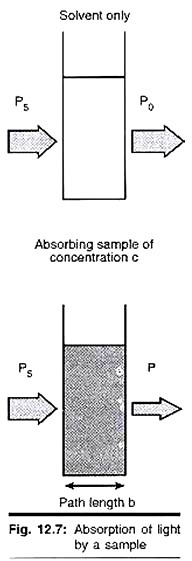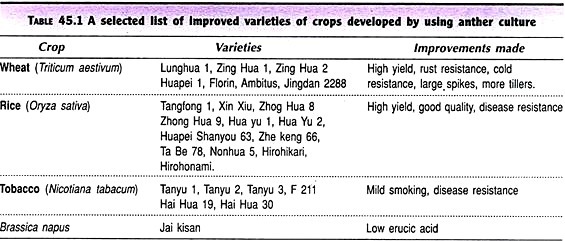ADVERTISEMENTS:
The following points highlight the three important reserve materials found in plants. The reserve materials are: 1. Carbohydrates 2. Fats, Lipids and Oils 3. Nitrogenous Organic Materials.
Reserve Material # 1. Carbohydrates:
These are made up of C, H and O. As a result of oxidation they release energy which is utilized by protoplasm. Main carbohydrates are as under:-
(a) Sugars:
ADVERTISEMENTS:
Monosaccharides:
They are simplest sugars and can not be hydrolysed into smaller units. They are sweet in taste and soluble in water. The common formula of monosaccharides is Cn(H2O)n.
On the basis of carbon atoms present in them, they have been grouped in to following classes:
Trioses: These contain 3 carbon atoms e.g., Glyceraldehyde and Dihydroxyacetone.
ADVERTISEMENTS:
Tetroses: These contain 4 carbon atoms e.g., Erythrose.
Pentoses: These contain 5 carbon atoms e.g., Ribose (C5H10O5) and Deoxyribose (C5H10O4)
Hexoses: These contain 6 carbon atoms e.g., Glucose, Fructose, Galactose (C^H^Ofi) etc.
Septoses: These contain 7 carbon atoms e.g., Sedoheptulose.
Disaccharides (C12H2O11):
The common sugar which we use in daily lives is merely a disaccharide well known as sucrose (= cane sugar). It is extracted from sugarcane and sugar beet. Other examples are maltose, lactose and cellobiose. Disaccharides upon hydrolysis yield two molecules of monosaccharides. For example, sucrose, upon hydrolysis produces one molecule of glucose and one molecule of fructose. On other hand maltose produces two molecules of glucose.
Likewise, trisaccharides produce three molecules of monosaccharides after hydrolysis, tetra saccharides four molecules of monosaccharides, pent saccharides five molecules of monosaccharides.
3. Polysaccharides:
ADVERTISEMENTS:
Main polysaccharides are pentosans e.g., xylan, araban and hexosans e.g., cellulose, inulin, glycogen and starch. All these polysaccharides are non- sugars of high molecular weight and after hydrolysis produces several molecules (more than 10) of monosaccharides.
Starch:
It is most important storage food. It is insoluble in water and formed by sugars. It is found in all parts of the plant but more in storage organs like seeds, fruits, tuber, rhizome, corm etc. Its chemical formula is (C6H10O5)n.
It is of two types:
ADVERTISEMENTS:
(i) Assimilatory starch or temporary starch which is formed during photosynthesis in light.
(ii) Reserve starch or permanent starch which is mostly found in seeds, fruits, rhizome etc. Sugar above a certain level is converted in to permanent starch.
Starch grains show a great variability in shape and form. Each starch grain has a deep shining point in the centre said as hilum. Starch layers are formed around this hilum. Such layers are called as stratification which are of equal size on all sides.
Such starch grains which contain the hilum in the centre are known as concentric starch grains. Examples are—wheat, maize, rice, pea etc. On other hand, as in potato tuber the hilum is present on one side. Thus stratification in such grains are not equal on all sides are said as eccentric starch grains.
Whenever, a starch grain contains only one hilum, it is said as simple starch grain e.g., maize. Sometimes, a starch grain contains more than one hilum (two or more) are known as compound starch grains e.g., rice, potato, oat etc. On hydrolysis, starch yields two molecules of glucose and takes a bluish black stain with iodine.
Inulin:
It is a water soluble carbohydrate made up of fructose and can be converted in to sugar. It is found in root cells of Dahlia (composite family). When a thin section of root of Dahlia is kept in glycerin or alcohol, it forms fan-like crystal.
Glycogen (Animal starch):
ADVERTISEMENTS:
This is insoluble carbohydrate made up of glucose and is common in animals, fungi, bacteria, blue-green algae, slime molds etc. Its formula is (C6H10O5)n. Glycogen is mostly found in the liver and muscles.
Cellulose:
It is water insoluble carbohydrate and present in cell walls of the plant (chief constituent of cell wall). Paper and cotton fibres are cellulose. This is also made up of glucose. In seeds of palm some layers of hemicellulose is found deposited on the cellulose made cell wall because of which the wall of the seed becomes hard and thick. Human can not digest cellulose.
Pectin:
The cementing material which binds the two cells together is said as middle lamella and is made up of calcium pectate. This substance increases water absorption capacity of wall. It has commercial value and is used in the preparation of jellies and gums.
Mucilage and gum:
ADVERTISEMENTS:
It is soluble in water and commonly found in plants. It helps in binding water as a slippery substance when wet and check easy evaporation of water. It also plays an important role in dispersal of seeds.
Reserve Material # 2. Fats, Lipids and Oils:
As compared to carbohydrate the amount of oxygen is low in these molecules. These are insoluble in water but soluble in organic solvents like ether, acetone and chloroform, synthesized by C. H and O like carbohydrates.
These are present in plants in the form of storage food and by oxidation liberate more energy than carbohydrate and protein. In cytoplasm, these are found in drops. Fats which are liquid at ordinary temperature are said as oils.
The different parts of the plants like seeds, endosperm, dry fruits contain the fats in the form of oil drops. Some lipids called waxes form coating on some plants which grow in xeric condition or dry habitats and help to check easy evaporation of water. Phospholipids are the main constituents of plasma membranes.
Reserve Material # 3. Nitrogenous Organic Materials:
(а) Proteins:
The proteins are linier polymers of amino acids linked by peptide bonds. They are present in protoplasm in form of dense colloidal solution with indefinite melting point and high molecular weight. In seeds proteins are present in the solid state in form of granules. They are made up of carbon, hydrogen, oxygen, nitrogen, sulphur. In addition, they also contain some quantities of phosphorus and iron.
ADVERTISEMENTS:
The percentage of the above elements is as follows:
Carbon — 50-55%
Hydrogen — 6.5-7.3%
Nitrogen — 15-19%
Sulphur — 0-2.8%
All enzymes are proteins and they also form part of unit membrane. Chlorophyll is also a mixture of magnesium and proteins. Cytochrome which takes an active part in electron transport are made up of proteins and iron.
Each protein molecule is made up of several amino acids joined by amide bonds. Such bonds are called as peptide bonds. They also contain hydrogen, disulphide and other types of bond except peptide bonds.
These are mostly insoluble in water, ether and alcohol but soluble in dilute salt solutions. Upon hydrolysis they produce a mixture of ![]() -amino acids but when heated, all proteins are coagulated and become physiologically dead.
-amino acids but when heated, all proteins are coagulated and become physiologically dead.
(b) Amides:
These are the salts of amino acids. The best example is asparagine and glutamine. These are found in form of granules in storage parts which are called aleurone grains. Aleurone grains are present in all cereal grains just below the seed coat in form of aleurone layer.
Each aleurone grain is made up of a larger crystalline part called as crystalloid which contains nitrogen and a smaller spherical part said as globoid which is made up of phosphates of calcium and magnesium. These are very complex molecules. For example, gliaden is such type of protein which is found in wheat.


